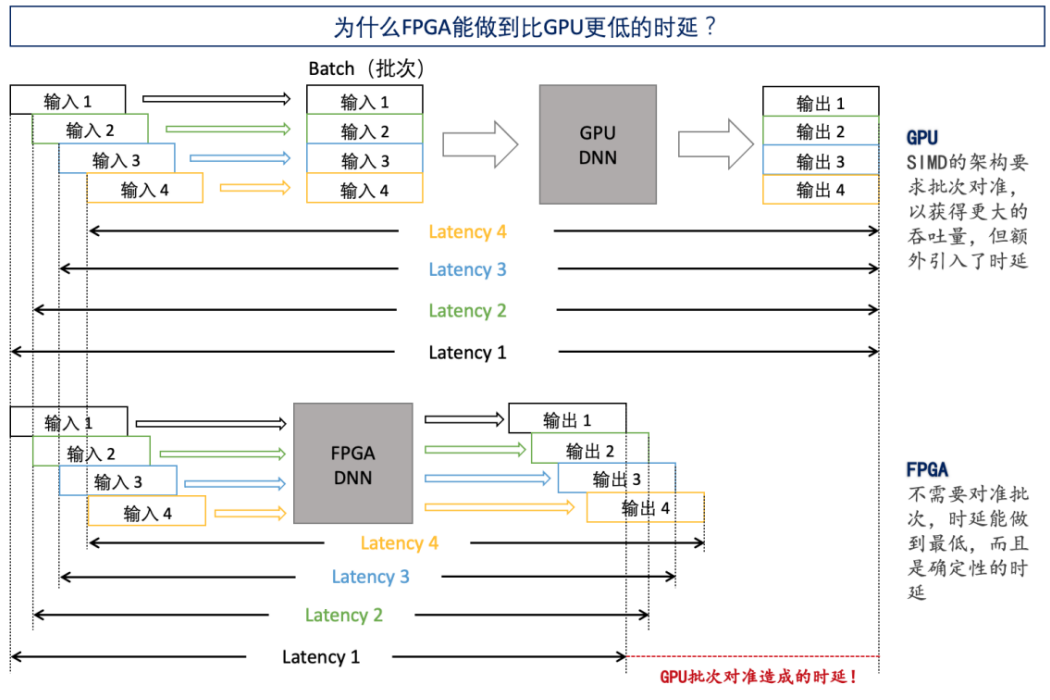
Click the blue text above to follow for more exciting content.
This article has a total of 697 words, and reading it will take about 2 minutes.
① FPGA Has a Strong Latency Advantage in AI Inference:
The “Batch-less” architecture of FPGA provides a significant latency advantage in AI inference. Due to network conditions and latency, many decisions cannot be uploaded to the cloud in time and must be executed locally, which is known as edge computing. Edge computing typically faces two major constraints: latency and power consumption. The need for GPUs to wait for batches results in higher latency compared to FPGAs. GPUs generally require different training samples to be divided into fixed-size “Batches” to maximize parallelism, necessitating the collection of several batches for unified processing, with each batch containing nearly a hundred data points. This gives GPUs a significant advantage when training large samples, but this advantage becomes a disadvantage when performing inference with small samples, as inference usually requires very little input data, and the GPU architecture introduces additional latency. The architecture of FPGA is batch-less, allowing it to determine processing methods based on data characteristics without needing to divide input data into batches like GPUs, thus achieving the lowest latency and providing a significant advantage for FPGA in AI inference.

② Flexibility of FPGA Interfaces:
FPGA has an unparalleled advantage in interface flexibility, making it particularly suitable for industrial scenarios. The essence of industry is highly decentralized small-batch scenarios, which often involve a large number of non-standard interfaces. For example, the LVDS encoding format of industrial image sensors often lacks a unified standard, making it difficult for engineers to find corresponding dedicated chips for interfacing. GPUs have a single interface, only PCIe, while the programmability of FPGAs allows them to communicate with any device, adapting to any standard and non-standard interfaces. This high flexibility brought by hardware programmability is an advantage of FPGAs in industrial scenarios.

Risk Warning:This content only represents the analysis, speculation, and judgment of the research team, and is published here solely for the purpose of conveying information, not as a basis for specific investment targets. Investment carries risks; proceed with caution!Copyright Statement:This content is copyrighted by the original author or organization. If reproduced, please indicate the source and author, retain the original title, and ensure the integrity of the article content, and bear legal responsibilities for copyright and other issues.
END
